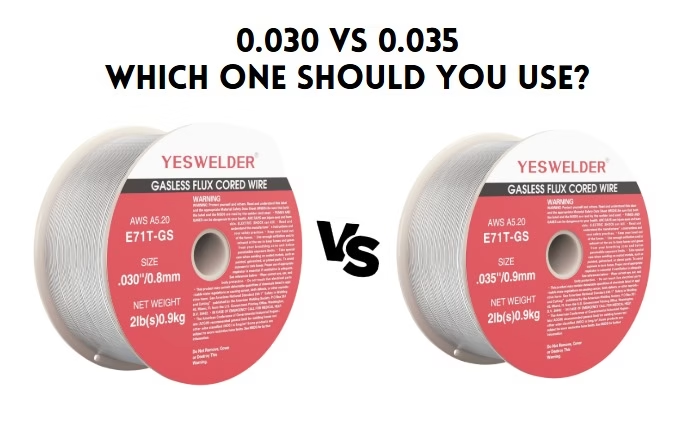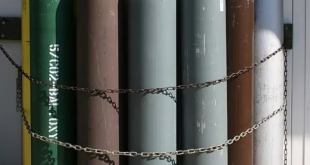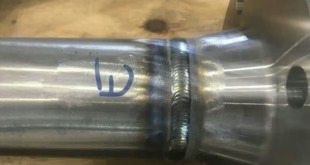Flux Core Wire 0.030 vs 0.035 – Which One You Should You Choose?
Choosing the right flux core wire size might seem like a minor detail, but it can have a big impact on your welding projects. Whether you’re a beginner or an experienced welder, understanding the differences between 0.030 and 0.035 flux core wires can help you achieve better results. In this article, we’ll dive into the details, compare these two wire sizes, and help you decide which one is the best fit for your needs.
What is Flux Core Wire?
Definition and Composition
Flux core wire is a type of welding wire that has a flux-filled core surrounded by a metal sheath. The flux acts as a shielding agent, protecting the weld pool from contaminants like oxygen and moisture. This eliminates the need for an external shielding gas, making it perfect for outdoor welding or windy conditions.

How it Works in Welding
When the wire melts during welding, the flux produces a protective gas and slag that shields the weld. This self-shielding property makes flux core wire a popular choice for MIG and FCAW (Flux-Cored Arc Welding) processes. It’s especially useful for welding thick materials and tackling heavy-duty projects.
Understanding Wire Sizes
The Basics of Wire Thickness
Wire thickness, often referred to as gauge or diameter, is measured in inches or millimeters. The size affects the amount of current required, penetration depth, and overall performance of the weld. Smaller wires, like 0.030, are thinner, while larger wires, such as 0.035, are thicker.
Common Applications of Different Sizes
- 0.030 Wire: Best suited for thinner materials and precise welds.
- 0.035 Wire: Ideal for thicker materials and heavy-duty applications.
0.030 Flux Core Wire
Characteristics and Features
The 0.030 flux core wire is thinner, making it perfect for detailed and precise work. It operates at lower amperages, which means it generates less heat and reduces the risk of warping thin metals.
Ideal Scenarios for Use
- Welding thin materials like sheet metal.
- Projects requiring intricate welds or minimal distortion.
- Hobbyist or DIY tasks.
Pros and Cons
Pros:
- Easy to use for beginners.
- Produces clean, precise welds.
- Requires less power.
Cons:
- Not ideal for thick materials.
- May struggle with deep penetration.
0.035 Flux Core Wire
Characteristics and Features
The 0.035 flux core wire is thicker, allowing it to handle higher amperages and produce stronger welds. It’s designed for heavy-duty applications and is better suited for welding thicker metals.
Ideal Scenarios for Use
- Welding thicker materials like structural steel.
- Projects that require high-strength welds.
- Industrial or professional settings.
Pros and Cons
Pros:
- Excellent penetration for thick materials.
- Handles higher amperages well.
- Suitable for demanding applications.
Cons:
- Requires more skill to handle.
- May cause excessive heat on thin metals.
Flux Core Wire 0.030 vs 0.035
Performance Differences
The 0.030 wire is better for light-duty applications, while the 0.035 wire excels in heavy-duty projects. The thinner wire provides precision, whereas the thicker one offers strength and durability.
Material Compatibility
- 0.030 Wire: Best for metals up to 1/8 inch thick.
- 0.035 Wire: Handles materials thicker than 1/8 inch with ease.
Ease of Use
For beginners, the 0.030 wire is easier to control due to its lower heat output. The 0.035 wire, however, may require more experience to manage effectively.
Factors to Consider When Choosing
Thickness of the Metal
If you’re welding thin materials, stick with 0.030 wire to avoid burning through. For thicker metals, 0.035 wire provides better penetration and strength.
Type of Welding Project
Consider the project’s requirements. Are you working on a light-duty task or a heavy-duty one? The wire size should align with your goals.
Machine Capability
Not all welding machines can handle both wire sizes. Check your machine’s specifications to ensure compatibility.
User Experience Level
Beginners often find 0.030 wire easier to use, while experienced welders can handle the challenges of 0.035 wire with ease.
Tips for Getting the Best Results
Proper Machine Settings
Adjust the voltage and wire feed speed according to the wire size and material thickness. Refer to your welding machine’s manual for guidance.
Wire Feeding Techniques
Maintain a consistent angle and distance between the wire and the workpiece. This ensures uniform welds and minimizes defects.
Safety Precautions
Always wear appropriate protective gear, including gloves, a welding helmet, and a fire-resistant jacket. Work in a well-ventilated area to avoid inhaling harmful fumes.
FAQs
What is the difference between flux core and solid wire?
Flux core wire has a flux-filled core that provides shielding, while solid wire requires an external shielding gas. Flux core is better for outdoor use, while solid wire is ideal for clean, indoor environments.
Can you use 0.030 and 0.035 wires interchangeably?
Not always. The wire size should match the material thickness and welding machine settings. Using the wrong size can lead to poor weld quality.
Which wire size is better for beginners?
The 0.030 wire is typically easier for beginners to handle due to its lower heat output and reduced risk of burn-through.
Do you need a shielding gas with flux core wire?
No, self-shielding flux core wire produces its own protective gas, eliminating the need for an external shielding gas.
How do you troubleshoot common flux core welding problems?
Check for proper machine settings, clean the workpiece, ensure consistent wire feeding, and inspect the wire for defects. Addressing these issues can improve weld quality significantly.
Conclusion
When it comes to choosing between 0.030 and 0.035 flux core wire, the decision ultimately depends on your project’s needs. If you’re working with thin materials or are new to welding, the 0.030 wire is your best bet. For thicker materials and more demanding tasks, go with the 0.035 wire. By understanding the characteristics of each wire size and considering factors like material thickness and machine capability, you can achieve high-quality welds every time.
 Welding of Welders All about Welding and Welders
Welding of Welders All about Welding and Welders



